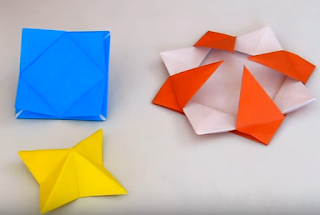In Things Fall Apart, Achebe not only
makes the colonizer, the white missionaries, and colonized, the people of
Umuofia, relationship clear but also attempts to reveal the true nature of this
relationship and the negative effects it brings with it. After extensively
describing the culture and traditions of Umuofia in a hundred and twenty five
pages, Achebe then describes the quick manner in which the colonizer destroys
the people’s faith in their own customs. He describes the white missionaries disregard
on the significance of the people’s traditional practices and then summarizes
postcolonial thinking in the last paragraph of the novel, stating that these
white missionaries will name their novel “The Pacification of the Primitive
Tribes of the Lower Niger” and that they will devote “perhaps not a whole
chapter but a reasonable paragraph” on Okonkwo’s life. By naming the novel this,
the District Commissioner is not accurately depicting the people of Umuofia and
the relationship between them and the white missionaries. Instead, the white
missionaries are reducing Okonkwo to topics on murder and suicide rather than
the respectable man he once was according to their customs. Furthermore, people
will believe what the white missionaries write about because they have not been
to the village of Umuofia and therefore cannot say what is true and what is not
true in the depiction of the village. Another negative effect is that Umuofia’s
traditional religion, language, and culture will disappear and be replaced by this
supposedly superior way of living.
Similar ideas that Achebe describes
can be seen when applying the postcolonial lens to analyze Frankenstein. Through
this lens, the creature can be seen as the colonized and the society that
surrounds him as the colonizer. As soon as the creature comes alive he is
immediately attacked by societal values. This makes the creature seem like he is
inferior just because the society around him says that he isn’t supposed to
look the way he does. He is ostracized from society because society makes him
feel that he is not allowed to be a part of their society, which is
similar to the Igbo people. The white missionaries continuously tell them that
they are worshipping false Gods and that they are only pieces of wood, which is
undermining the Igbo people’s culture and eventually making it nonexistent. Moreover,
it is in postcolonial nature to describe the “inferior” people and customs in
such a way that makes the colonizers feel like they are doing the right thing
and this is seen in Frankenstein also when Frankenstein is describing
the creature’s grin as evil when it really could be an expression of despair
when Frankenstein believes he is doing the correct thing by destroying the
creature’s companion. Additionally, the reader can only believe that the Creature
is evil when Frankenstein is describing him because he incessantly describes
the creature as hideous and evil. This is similar to the white missionaries
continuously describing the Africans as savages and people who have no culture
or language in Heart of Darkness. The negative effect that comes from
this colonizer/colonized relationship is that Frankenstein’s family is killed
by the creature and eventually the creature also dies, which is similar to the
death of the Igbo people’s culture.
Finally, Achebe’s argument can also
be applied to the movie Avatar. In Avatar, the colonizer are the
humans and the colonized are the Na’vi. The humans want to destroy the Na’vi
people’s homeland for their own selfish reasons. They do not understand the
culture or the significance behind the tree that they want to mine when they attempt
to have the people relocate. Jake Sully tries to understand their customs and
gain the Na’vi people’s trust but ultimately his goal is to also get resources
from their land. He is like Mr. Brown in Things Fall Apart. Mr. Brown
tries to convert the Igbo people, but while trying to do this, he learns about
the Igbo culture. Similarly, while Sully
is attempting to relocate the people, he is learning more and more about their
culture. The humans almost destroy the customs, the culture and the
significance behind their homeland near the end of the movie, which illustrates
Achebe’s argument that in the process of trying to convert the colonized that
they are destroying their traditions.
In all three works, and especially
in Things Fall Apart, the events led systematically from one thing to
another which led to another thing until eventually things fell apart. This
systematic way of events is like an origami slinky. One piece is connected to
the next which is connected to the next, and this makes it eventually “fall”
down when placed on stairs.

















